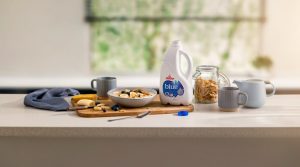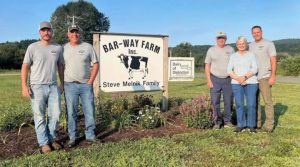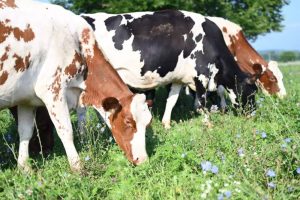
The US infant formula market has been suffering from shortages, in part, because of a problem rarely encountered in the country’s economy: a lack of free-market competition.
However, the underlying nature of the US infant-formula market has also been brought into sharp focus.
The recall of products by major supplier Abbott Laboratories – and the closure of one of its factories – has roiled the US infant-formula market in recent weeks.
According to retail-tracking company Datasembly, in the week ending 28 May, the nationwide infant formula out-of-stocks stood at 74%.
Three companies – Abbott Laboratories, Mead Johnson Nutrition (owned by Reckitt Benckiser) and Nestlé – accounted for more than 90% of US baby-milk sales in the US in 2020, GlobalData research shows. All companies, plus a fourth major supplier, Perrigo Co., were approached for comment by Just Food for this article and none responded.

Moreover, the market is highly regulated in the US, with the federal government’s Special Supplemental Nutrition Program for Women, Infants and Children (WIC) being the major purchaser of infant formula – more than half of all formula is purchased with WIC benefits.
State agencies operate the programme. To reduce costs, most agencies must competitively bid rebate contracts with infant-formula manufacturers. Exclusive contracts are awarded to manufacturers offering the lowest net price to provide infant formula to WIC participants.
The result is market fragility, with shortages following the closure of Abbott’s plant in Sturgis, Michigan, in February. The factory was closed after four consumer complaints related to Cronobacter sakazakii or Salmonella infections in infants who had consumed powder infant formula manufactured at the plant. All four were hospitalised and the bacterial infection may have helped kill two, says the FDA.
Abbott has previously said “there is no conclusive evidence to link Abbott’s formulas to these infant illnesses” following the FDA and CDC investigation: “Abbott conducts microbiological testing on products prior to distribution and no Abbott formula distributed to consumers tested positive for Cronobacter sakazakii or Salmonella. All retained product tested by Abbott and the FDA during the inspection of the facility came back negative for Cronobacter sakazakii and/or Salmonella. No Salmonella was found at the Sturgis facility.”
With Abbott the largest formula manufacturer in the US, the shutdown and voluntary recall of potentially affected products left empty shelves — and worried parents.
The plant reopened this week (4 June), with Matt Gould, president of dairy consultancy Dairy & Food Market Analyst Inc, quipping that the most obvious fix to the resulting US baby formula shortage could be: “Don’t let your plant go down. Run it well and safely.”
But Gould and other experts say there have been several reasons behind the US infant formula shortage and prescribe a combination of solutions.
For one, Gould wants better industry processes and faster government responses to problems. “One of the reasons [the plant closing] was so destructive was that it stayed down so long. It wasn’t easy to identify, resolve and get up and running. It took months.”
Problems causing the Abbott plant shutdown had been building up, Gould argues. Supply chains and labour supplies have been disrupted during the Covid-19 crisis, requiring manufacturing facilities to cut lines, reduce volume and possibly defer maintenance. “That’s an important backdrop,” he tells Just Food.
He also points to the highly-consolidated nature of the US infant-formula market and its thin profit margins. “You don’t have the economics to support a lot of flexibility. When a problem occurs, it becomes big real fast.”
Laura Modi, CEO and co-founder of Bobbie — an organic, FDA-approved infant formula manufactured in the US — says the WIC bidding process has provided cost savings but adds: “It has put many families in precarious positions when it comes to feeding their infants” by limiting factory numbers.
“We should ensure that no one facility shut down in the US [can] affect all consumers’ access to infant formula in this country,” Modi says. She wants more manufacturing capacity, with the industry and government “to build supply assurances moving forward”.
Brian Dittmeier, senior director of public policy at the National WIC Association, believes the contract method enables WIC regulators to be “a driver of change”, with state agencies able to push for plant improvements, such as built-in redundancy.
However, Dittmeier wants more flexibility for WIC to respond effectively to emergencies. One problem is rules limiting families using benefits to buy formula from particular brands, even when unavailable. This situation was worse before flexibilities were introduced during the Covid-19 pandemic under The Families First Coronavirus Response Act, he explains, underlining that he wants the waiver system expanded. “The only reason WIC has been able to issue any waivers to reduce red tape for families that switch formulas is Covid.”
Reduce regulation?
Wendy White, industry manager for food and beverages, at the Georgia Institute of Technology, opposes reducing government regulation of infant formula production. “This is the sole source of nutrition for this age group. That’s why it’s so heavily regulated.”
The problem, she argues, is that “resources are stretched thin”. The FDA conducts inspections of formula food production facilities and oversees pharmaceuticals, medical devices and cosmetics, while the US Department of Agriculture (USDA) handles inspections of red meat, poultry and eggs.
White recalled: “I have been a food safety manager in facilities inspected by both USDA and FDA,” she says, asserting that, while USDA inspectors are present during all work shifts, “FDA products are not inspected nearly as much”.
White wants more attention devoted to high-risk products under FDA jurisdiction. “I’m not necessarily advocating for the merger of these two, but I think there needs to be a better allocation of resources [for inspections].”
Import options
One problem, White notes, is the US limits infant formula imports, which has exacerbated the current shortages. She suggests the restrictions are in place because “there have been some scandals with infant formula production in other countries”.
But US officials know which companies have proven track records and, in fact, as an emergency measure, fresh FDA guidance has been issued so that major manufacturers can ship formula to help alleviate the shortage. “The government needs to encourage diversity of supply,” White says. “I think we can keep our high standards but still allow imports.”
This is now happening under the US federal government’s Operation Fly Formula – allowing in overseas infant formula that meets the country’s health and safety standards.
UK infant-formula producer Kendamil and Bubs Australia are among those to have benefited.
Ross McMahon, the CEO of Kendamil, says: “Our factory is working around the clock to … reach as many parents as possible.
“We have a growing number of passionate fans Stateside, and we look forward to helping many more over the months and years to come.”
Bubs CEO Kristy Carr says the Australia-based group is working “with the White House to resolve logistical challenges so that we can have Bubs infant formula products on-shelf in major American retailers as quickly as possible”.
In the short term, Operation Fly Formula helps boost supplies. In the long-term it may diversify the US market, Dittmeiser suggests. “The new players are here to stay.”
Such import liberalisation is being eyed by government officials in neighbouring Canada, which while lacking US-style shortages, is “highly dependent on US imports for baby formula,” says Sylvain Charlebois, senior director in the Agri-Food Analytics Lab at Dalhousie University in Nova Scotia.
“We are only one recall away from seeing shortages. The market is not that attractive for investors since birth rates are dropping in North America, so, it is a challenge for Canada to get new players involved … have American companies invest in Canada.”
This problem is worsened by Canada’s supply management regime, limiting milk production by quotas to stabilise prices.
The supply system has also, Charlebois says, made Canadian dairy producers less sensitive to “demand-side economics”. He adds: “If a market opportunity exists, dairy farming will not recognise it.”
He points to Canada’s largest infant-formula factory, located in Kingston, Ontario, run by Chinese dairy major Feihe International. Charlebois argues “it should have been owned and operated by a Canadian company, full stop”, supplying the Canadian market.
Instead, the Canada Royal Milk (CRM) plant exports its output to China. Company human resources manager Carey Bidtnes says, at present, the shipments comprise powder blends of fortified cow milk, whole goat milk, and skim goat milk, exported in bulk. CRM plans to make and sell infant formula but is awaiting regulatory approvals from the Canadian and Chinese governments.
Charlebois said it’s important this changes, especially as the factory has received CAD225m (US$18m) in Canadian government subsidies. “The original plan was to use about 15 percent of its production for the Canadian market,” he says, but after three years’ operation, Health Canada, the federal health ministry, has not approved CRM products for domestic sale.
“Dairy farmers have clearly not put enough pressure on CRM to service the Canadian market,” Charlebois suggests. “The plant is state-of-the-art.”
Bidtnes says Canadian clinical trials for cow milk infant formula have concluded and pre-market notification applications for formula for infants of zero to 12 months have been submitted. “Once approvals have been received from Health Canada, CRM has the capacity to manufacture infant formula for the domestic market immediately,” he says.
For all the debate about what has caused the structure of the infant-formula markets in the US and Canada, there is one certainty: the situation has left parents anxious about how to feed their infants and change is needed.

























